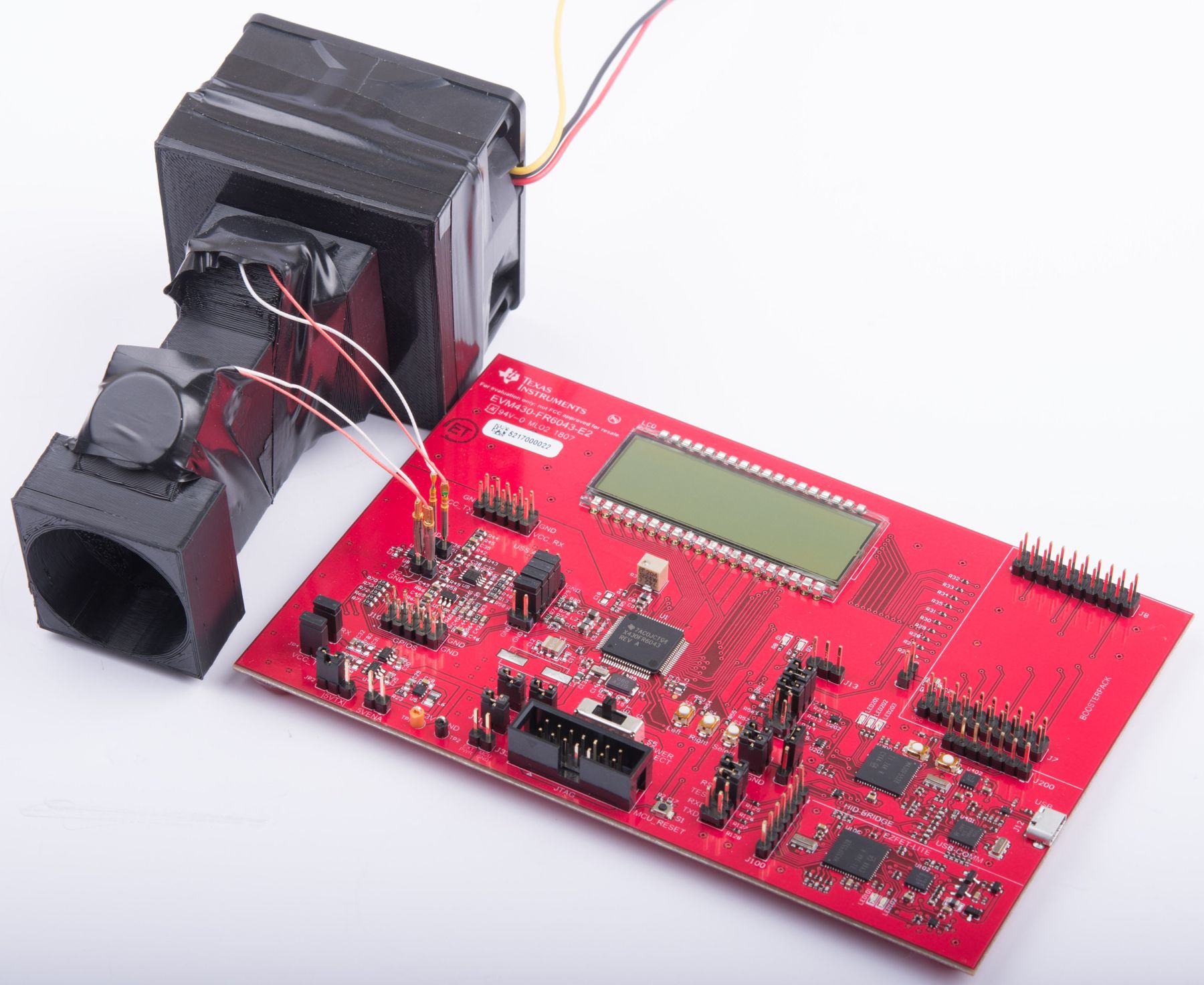JAJU680A January 2019 – July 2022
- 概要
- Resources
- 特長
- アプリケーション
- 5
- 1System Description
- 2System Overview
- 3Hardware, Software, Testing Requirements, and Test Results
- 4Design and Documentation Support
- 5About the Authors
- 6Revision History
3.1.3 Transducer and Meter
The purpose of this reference design is to show the implementation of an ultrasonic front end for a flow-meter application, not the design of a transducer or meter. The test meters are based on a combination of off-the-shelf meters available from third party vendors like Audiowell, CeramTec, Hurricane, and Jiakang, as well as other meter vendors. Figure 4-10 shows the transducer connections between the meter and the EVM430-FR6043 device, with the meter in stationary (zero flow) conditions. The connections do not change even during the flow tests.
 Figure 4-10 EVM430-FR6043 Connected to Gas-Flow Meter in Stationary Setup
Figure 4-10 EVM430-FR6043 Connected to Gas-Flow Meter in Stationary SetupAs explained in Section 2.2.1, an ultrasonic transmission is first generated by the first transducer and received by the second transducer after propagation through the gas medium. The second transducer then emits an ultrasonic signal that is subsequently received by the first transducer. In both cases, the ultrasonic signal generated by the transducers is a result of the excitation (pulses generated) at the transducer frequency by the USS module on the MSP430FR6043 MCU.